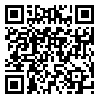Volume 1, Issue 3 (12-2014)
jbrms 2014, 1(3): 39-44 |
Back to browse issues page
Ataollah Hashemian 
 , Ashraf Direkvand-Moghadam
, Ashraf Direkvand-Moghadam 
 , Ali Delpisheh
, Ali Delpisheh 
 , Azadeh Direkvand-Moghadam
, Azadeh Direkvand-Moghadam 
 , Zeinab Kolivand
, Zeinab Kolivand 


 , Ashraf Direkvand-Moghadam
, Ashraf Direkvand-Moghadam 
 , Ali Delpisheh
, Ali Delpisheh 
 , Azadeh Direkvand-Moghadam
, Azadeh Direkvand-Moghadam 
 , Zeinab Kolivand
, Zeinab Kolivand 

, direkvand-a@medilam.ac.ir
Abstract: (5183 Views)
Introduction: Internet addiction is a global problem that caused negative effects on health. The present study aimed to determine the prevalence of Internet addiction in Iranian high school students in 2014. Materials and methods: In a cross – sectional study assessed the prevalence of Internet addiction among 381 high school students in Ilam, in 2014. The samples were selected by a multi-stage sampling method. Data was collected by a two-part questionnaire. The first part of the questionnaire was included the personal characteristics. Second part of the questionnaire was Internet Addiction Test (ITA) -20. SPSS software Package 16 was used to analyze the data. Results: Overall 75 (19.7%) students put into the Internet addiction group. Mild and moderate Internet addiction reported in 18.1% and 1.6% of all participants, respectively. There were any cases of sever Internet addiction. The mean Internet used to be 2.12 ± 2.32 and 3.57 ± 2.7 hours in non-Internet addiction and internet addiction groups, respectively (P < 0.000). The mean Internet access was 8.11 ± 6.7 and 8.2 ± 5.75 hours in non-Internet addiction and internet addiction groups, respectively. Conclusion: Internet addiction is a serious issue in teenagers. High school students possess a high danger for internet addiction. Therefore, education about the proper use of the Internet is necessary for high school students.
Type of Study: Research |
Received: 2014/11/22 | Accepted: 2015/01/18 | Published: 2015/01/19
Received: 2014/11/22 | Accepted: 2015/01/18 | Published: 2015/01/19
| Rights and permissions | |
 |
This work is licensed under a Creative Commons Attribution-NonCommercial 4.0 International License. |
